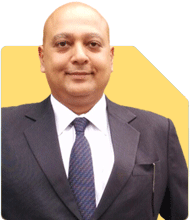Patrick Dsouza |242 Answers |Ask -Follow
CAT, XAT, CMAT, CET Expert - Answered on Apr 29, 2024
Along with his wife, Rochelle, he trains students for competitive management entrance exams such as the Common Admission Test, the Xavier Aptitude Test, Common Management Admission Test and the Common Entrance Test.
They also train students for group discussions and interviews.
Patrick has scored in the 100 percentile six times in CAT. He achieved the first rank in XAT twice, in CET thrice and once in the Narsee Monjee Management Aptitude Test.
Apart from coaching students for MBA exams, Patrick and Rochelle have trained aspirants from the IIMs, the Jamnalal Bajaj Institute of Management Studies and the S P Jain Institute of Management Studies and Research for campus placements.
Patrick has been a panellist on the group discussion and panel interview rounds for some of the top management colleges in Mumbai.
He has graduated in mechanical engineering from the Motilal Nehru National Institute of Technology, Allahabad. He has completed his masters in management from the Jamnalal Bajaj Institute of Management Studies, Mumbai.... more

Hi, i am currently doing btech computer science from iit tirupati ,3rd year,i want to study ms in MIT,Stanford,UoB,caltech,how to get in,what i should prepare
Usually the first step is to find the admission procedure for each of these colleges. Check the deadline and what is required. Also check the date when you have to submit the scores and then plan your preparation for the exams accordingly. Usually the US universities would have weightage for extra and co curricular activities. Check that out and get involved with those activities.
You may like to see similar questions and answers below
Geeta Ratra |125 Answers |Ask -Follow
Visas, Study Abroad Expert - Answered on Aug 09, 2023
Sushil Sukhwani |356 Answers |Ask -Follow
Study Abroad Expert - Answered on Sep 11, 2023
Sushil Sukhwani |356 Answers |Ask -Follow
Study Abroad Expert - Answered on Sep 26, 2023
Sushil Sukhwani |356 Answers |Ask -Follow
Study Abroad Expert - Answered on May 11, 2024
Ramalingam Kalirajan |2284 Answers |Ask -Follow
Mutual Funds, Financial Planning Expert - Answered on May 15, 2024
Ramalingam Kalirajan |2284 Answers |Ask -Follow
Mutual Funds, Financial Planning Expert - Answered on May 15, 2024
Ramalingam Kalirajan |2284 Answers |Ask -Follow
Mutual Funds, Financial Planning Expert - Answered on May 15, 2024
Ramalingam Kalirajan |2284 Answers |Ask -Follow
Mutual Funds, Financial Planning Expert - Answered on May 15, 2024
Ramalingam Kalirajan |2284 Answers |Ask -Follow
Mutual Funds, Financial Planning Expert - Answered on May 15, 2024
Ramalingam Kalirajan |2284 Answers |Ask -Follow
Mutual Funds, Financial Planning Expert - Answered on May 15, 2024
Ramalingam Kalirajan |2284 Answers |Ask -Follow
Mutual Funds, Financial Planning Expert - Answered on May 15, 2024
Ramalingam Kalirajan |2284 Answers |Ask -Follow
Mutual Funds, Financial Planning Expert - Answered on May 15, 2024
Ramalingam Kalirajan |2284 Answers |Ask -Follow
Mutual Funds, Financial Planning Expert - Answered on May 15, 2024
Ramalingam Kalirajan |2284 Answers |Ask -Follow
Mutual Funds, Financial Planning Expert - Answered on May 15, 2024
























